Refrigerator Revolution Revisited: 1928 Frigidaire
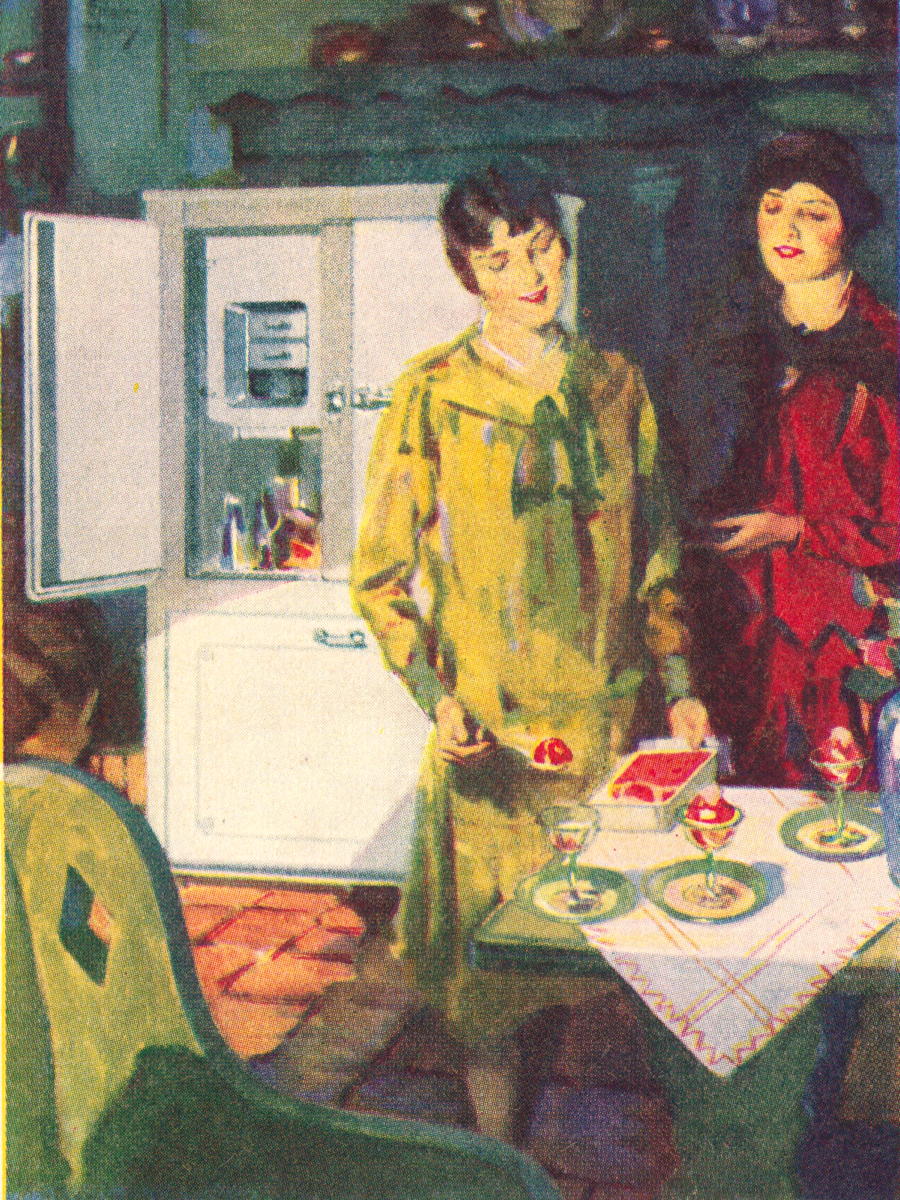
Enjoying the fruits of their Frigidaire.
Since writing Refrigerator Revolution I’ve picked up two other refrigerator cookbook/manuals, and I’ve written a script to scan cookbooks into PDFs. So besides covering three refrigerator manuals (1928, 1942, and 1947) in this series, I’ll also provide searchable downloads of them, so that you can see my sources for yourself.
- Frigidaire, 1928
- Cold Cooking, 1942
- Norge Cold Cookery, 1947
The oldest refrigerator manual in my collection, and the inspiration for this series, is the 1928 Frigidaire Recipes (PDF File, 15.5 MB). Like all three of these books, It’s both a manual and a recipe collection. It goes over the basic functions of the refrigerator, such as its dial for adjusting how quickly things freeze and how to defrost.
The Frigidaire book’s subtitle was “Prepared especially for Frigidaire Automatic Refrigerators equipped with the Frigidaire Cold Control.” That’s a very dry description of something you had to see to believe:
The primary purpose of Frigidaire Automatic Refrigeration is to preserve food. In this capacity it is today preventing needless food spoilage and safeguarding health in hundreds of thousands of homes throughout the world. But there are many other services which Frigidaire offers.
The delicious frozen desserts and salads which may be prepared with the aid of Frigidaire, represent an entirely new application of the household refrigerator. To understand thoroughly how easily these frozen dishes may be prepared is to value Frigidaire above all other household utilities.
The language reminds me of early home computer manuals, promising a revolutionary appliance that will change the way you live. Like Andy Hertzfeld in Revolution in The Valley, the refrigerator is referred to as a subject without an article. Frigidaire, like Macintosh, is a person, not a thing.
Frigidaire was very proud of their design, especially the dial. There are two chapters about the Cold Control. The first chapter describes it, and where it should be normally (setting 1). The second chapter covers the methods for using it, which means how to use it to quickly freeze desserts and to “retain the texture and flavor” until serving time and for leftovers. While the “primary purpose” of the Frigidaire is the very utilitarian “preserve food”, Frigidaire saw the dial as a means of making food. Literally, the dial performed the function of an oven dial, treating freezing food as a part of the cooking process.
Frigidaire Recipes is fourteen years earlier than Cold Cooking and there is no warning about keeping your refrigerator on at all times. Possibly they hadn’t yet realized people were turning them off in the winter. Possibly, their market didn’t yet include the rural buyers for whom that might seem to be a reasonable option. Rural America wasn’t nearly as electrified as urban America and city-dwellers wouldn’t have had as much space for storing food in the outer cold.
One new benefit to owning a refrigerator I hadn’t seen before was eye-opening:
Frigidaire affords care-free refrigeration in that it is entirely automatic and dependable in operation. It is possible to go away for the week end or even longer without considering food supply.
When you have a refrigerator/freezer, you no longer have to babysit your food supply! That’s not something that ever occurred to me. But of course it’s true. If you have an icebox, you have to manage the ice. If the ice melts while you’re gone, not only does all of the food in your icebox go bad but you come home to a disgusting smell and a potentially dangerous mess.
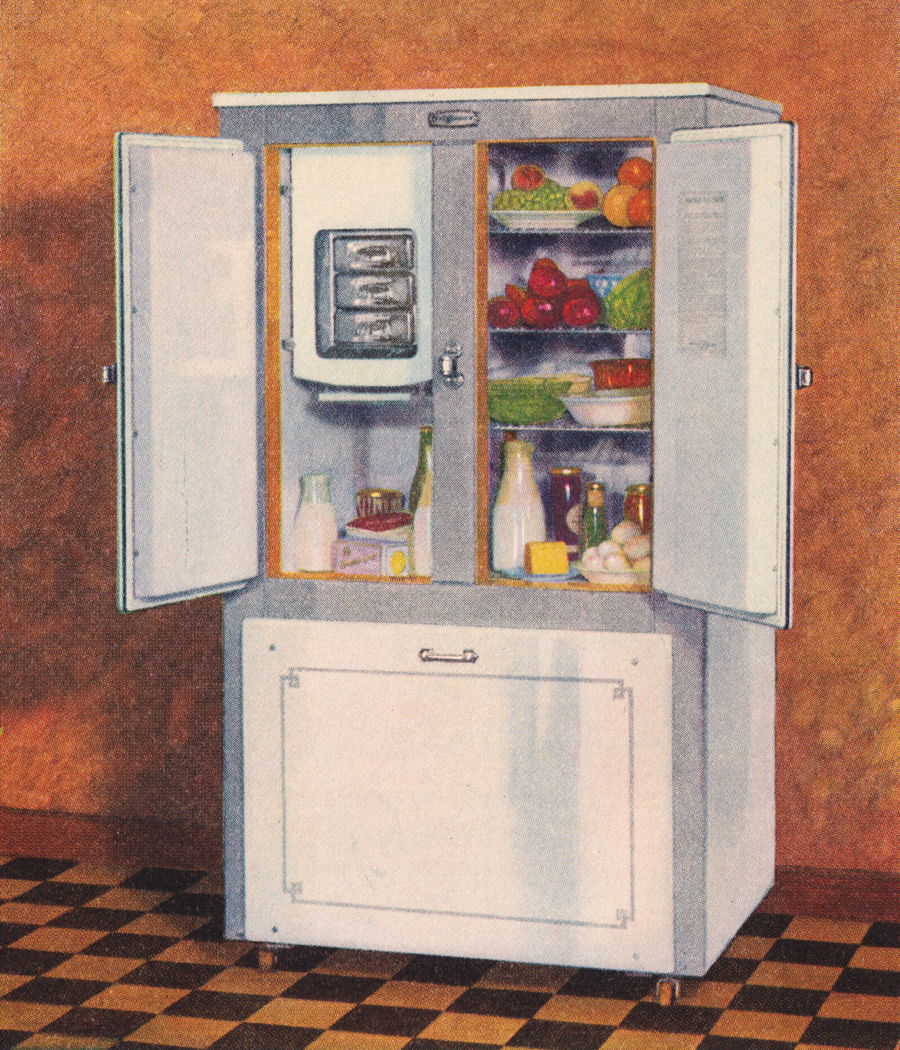
This looks more like a dining room buffet than a refrigerator.
But there’s a whole lot more rolled up in that statement than just food preservation. Throughout human history, you had to babysit your food supply not just because it might go bad but because someone would steal any unguarded food. Wherever their market for these refrigerators lives, Frigidaire assumes that it is safe to leave not just the food but the expensive appliance unguarded.
The audience for this manual does not have servants to watch over their homes and belongings while they’re gone. If they did, they wouldn’t have to worry about maintaining an ice supply—their servants could do it. This is a new urban middle class. They’re taking vacations and weekend getaways. They’re visiting far flung family members and friends in the countryside. This is America. And a uniquely American social dynamic.
These two advancements—the ability to leave belongings unguarded, and dispersed social connections very different from those of the old world—are both related, and among the greatest advancements of modernity.
If the quality of the book reflects the quality of the refrigerator itself, the 1928 Frigidaire must have been more than just a utilitarian appliance. Both the book and the jacket were designed to last. From the font to the cover design, this book is meant to evoke elegance. Unlike the other two manuals, this is a hardcover, with a beautiful but simple dust jacket and a similarly elegant design on the hardcover itself. The drawing of the Model AP-7-2 Frigidaire makes it look more like a piece of dining room furniture than like a modern refrigerator.
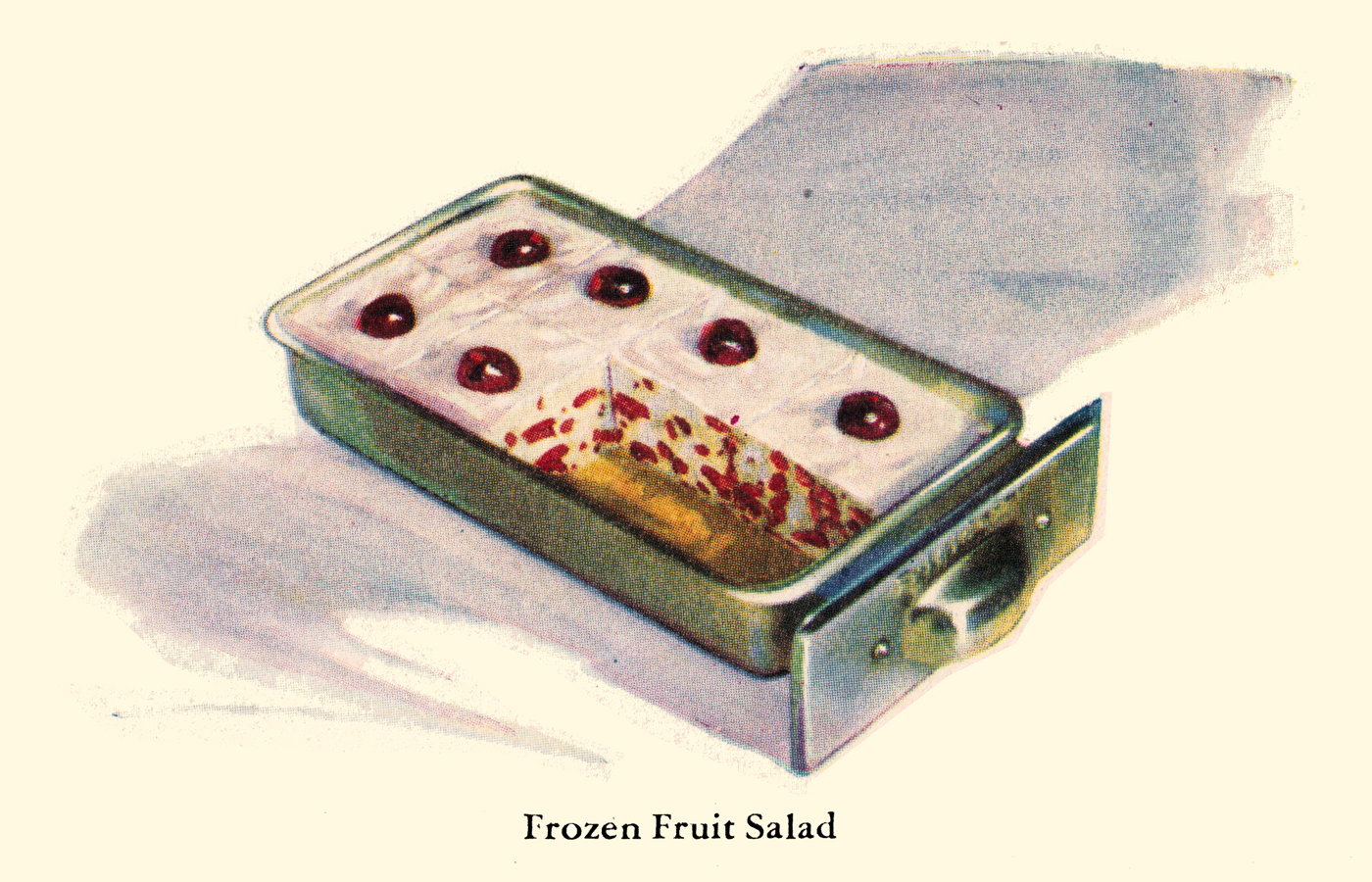
A very elegant refrigerator tray for making ice creams and other frozen desserts.
The techniques in the recipes are interesting, too. I chose to make the Peppermint Candy Ice Cream partly because I still had a lot of candy canes left from Christmas but also because it used a technique for making ice cream that I hadn’t seen before. Instead of making a syrup, cooling it, and then whipping cream and folding it in—as even other recipes in this book do—the candy canes (“peppermint candy”) are dissolved into the milk using a double boiler. Chill it in the refrigerator first, then “freeze until firm” in a “Frigidaire tray”.
Once “firm”, remove it “and beat quickly [adding the] cream during this beating process”. Those instructions both worried and intrigued me. By “firm” it obviously didn’t mean to freeze the milk, or it wouldn’t be beatable. I ended up freezing it for a couple of hours. It never froze, or even seemed firm, but it did thicken considerably. Their use of “firm” may be like my use of “freezing” just a sentence ago: it doesn’t literally freeze, but it does firm up.
And adding the cream to the freezing cold milk syrup did work. The cream never came to peaks, but it did create a fluffy, creamy ice cream. There’s no reason to transfer it to the refrigerator for half an hour or so to soften before eating, because it stays soft in the freezer.
As I wrote in Refrigerator Revolution, easily available ice cubes are one of the greatest social changes wrought by the home refrigerator/freezer. Frigidaire appears to have recognized this: their book contains an entire, if short, chapter just on ice cubes.
ICE CUBES not only cool beverages, but they add refreshing attractiveness. Ice cubes are frozen rapidly in Frigidaire. But in cases of emergency when there is an unusual demand for ice they may be frozen with greater rapidity by turning the Cold Control to the 5th or 6th position. If more time is allowed, however, they will freeze more attractively, especially when a garnish is added.
Defrost “only” once every month? I remember my parents defrosting their refrigerator, possibly once every year or so. I have never defrosted my current refrigerator. The only ice it collects is in the ice cube maker.
The recipes, of course, take advantage of the owner’s newly-acquired reliable refrigeration. Leftovers can be turned into “very inviting salads of any type” because your refrigerator keeps leftovers fresh.
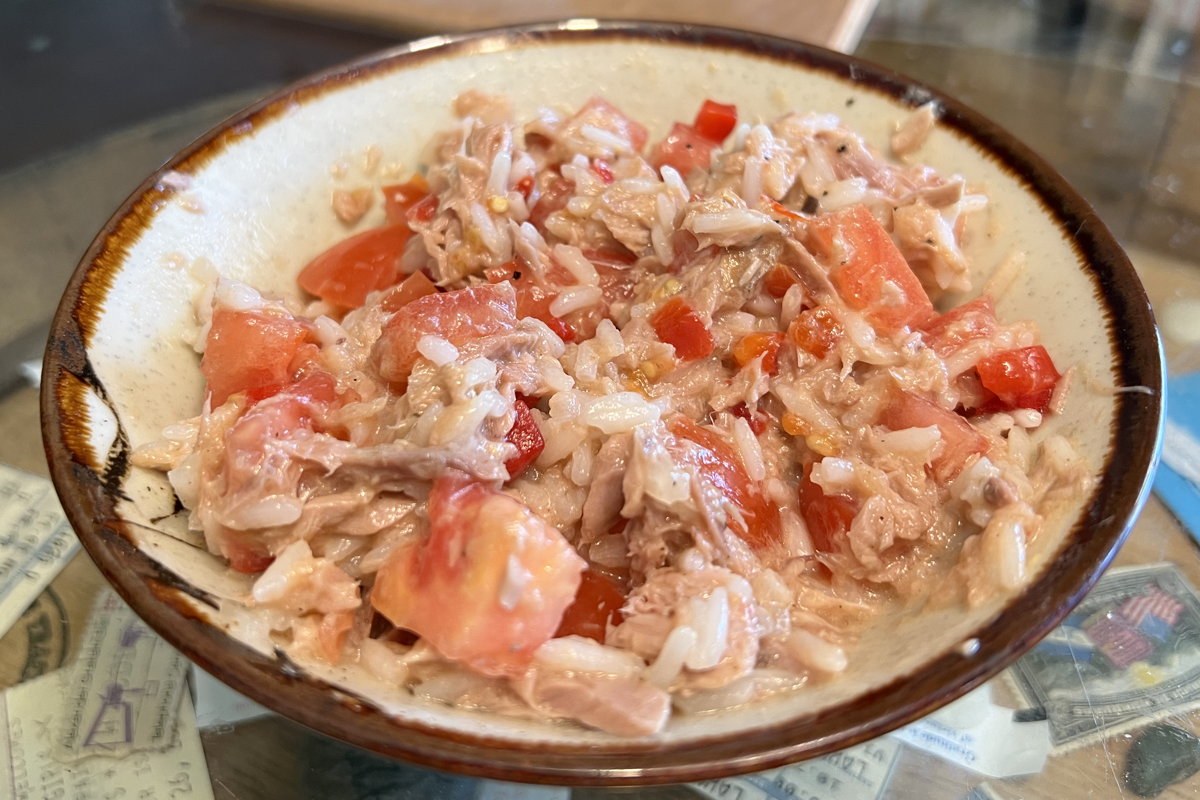
Frigidaire Tuna Salad
Servings: 4
Preparation Time: 45 minutes
Miss Verna L. Miller
Frigidaire Recipes (PDF File, 15.5 MB)
Ingredients
- 1 cup tuna
- 1 cup cooked rice
- 1 tbsp minced onion
- 2 medium tomatoes, diced
- ¾ cup mayonnaise
- lettuce
- stuffed olives
Steps
- Flake the tuna apart.
- Stir in the rice, onion, and tomatoes.
- Add the mayonnaise and mix with a fork.
- Serve on lettuce, garnished with olives cut in half.
Beverages are also a specialty of the refrigerator. One of the interesting thing about this chapter is that two of the beverages are “very good for invalids”. An egg-nog made with an egg, sugar, milk, and brandy is “very good for invalids”. It would have to be. In 1928 it would have been illegal for anyone else to drink this egg-nog. Both of the recipes in this book noted as good for invalids are also the only recipes that include alcohol.
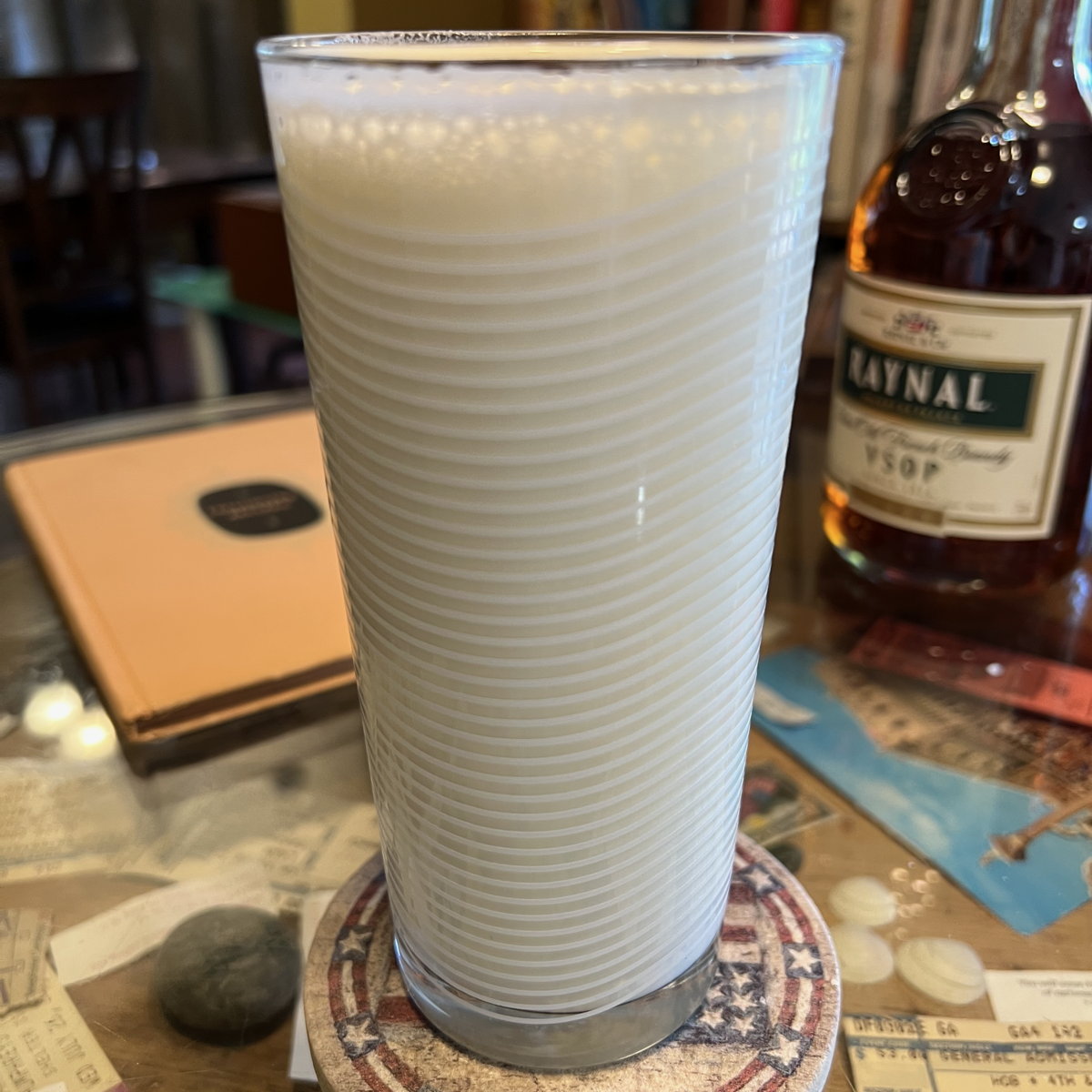
Brandy Egg-Nog
Servings: 1
Preparation Time: 10 minutes
Miss Verna L. Miller
Frigidaire Recipes (PDF File, 15.5 MB)
Ingredients
- 1 egg
- speck of salt
- ¾ tbsp sugar
- ¾ cup milk
- 1 tbsp brandy
- nutmeg
Steps
- Egg and milk should be chilled.
- Mix egg, sugar, and salt in a blender.
- Add the milk and brandy; blend until frothy.
- Sprinkle with nutmeg.
- You can also separate the egg(s). Beat the egg white until foamy (not stiff) and fold into the final mixture.
If you don’t want to risk jail, the “stimulant can be omitted and a grating of nutmeg can be substituted.”
With the brandy, it's a nice egg-and-milk breakfast drink, and does indeed taste like traditional eggnog. I haven’t tried it without the brandy yet, and probably never will. At that point it’s pretty much just egg and milk with sugar added.
Prohibition doesn’t just enter into the beverages, however. There’s a cocktail section that includes cocktail appetizers—for example, crab flake, or oysters, with cocktail sauce. But the final recipe in that section is a Raisin Cocktail:
Pour some sherry wine flavor over seedless raisins and let stand in Frigidaire for one hour. Make a sauce of one cup tomato ketchup, season with dash of tobasco sauce, celery seed and the juice of two lemons. Add a few chopped almonds. Fill glasses and chill.
This recipe is almost certainly a remnant of prohibition. That’s why the recipe calls for “sherry wine flavor”, a terminology that confused me until I realized that sherry wine itself would have been unavailable. The section on flavoring custard also mentions “rum, port, sherry and brandy flavors”. Apparently, those flavorings were available as “jellies”.
Raisins were one of the easier ways to make wine at home, which meant that people were probably beginning to accept the flavor of raisins in cocktails. This may have been a cocktail that gave them that flavor without breaking the law.
As with all of the old refrigerator manuals I’ve seen, this book is filled with ice creams you can make in your freezer without using a churn. Home freezers made the ice cream churn obsolete until their resurgence as a nostalgia item in the sixties or seventies.
The Maple Ice Cream also contains a new (for me) technique. The hot syrup is stirred into a thin paste of flour before moving on to the normal process of adding egg yolk, beaten egg white, and whipped cream. I decided to use whole wheat flour, and began to think it a mistake when boiling the syrup for ten minutes—it had a very bready aroma. The finished product, however, is a very robust maple flavor. This is a real winner.
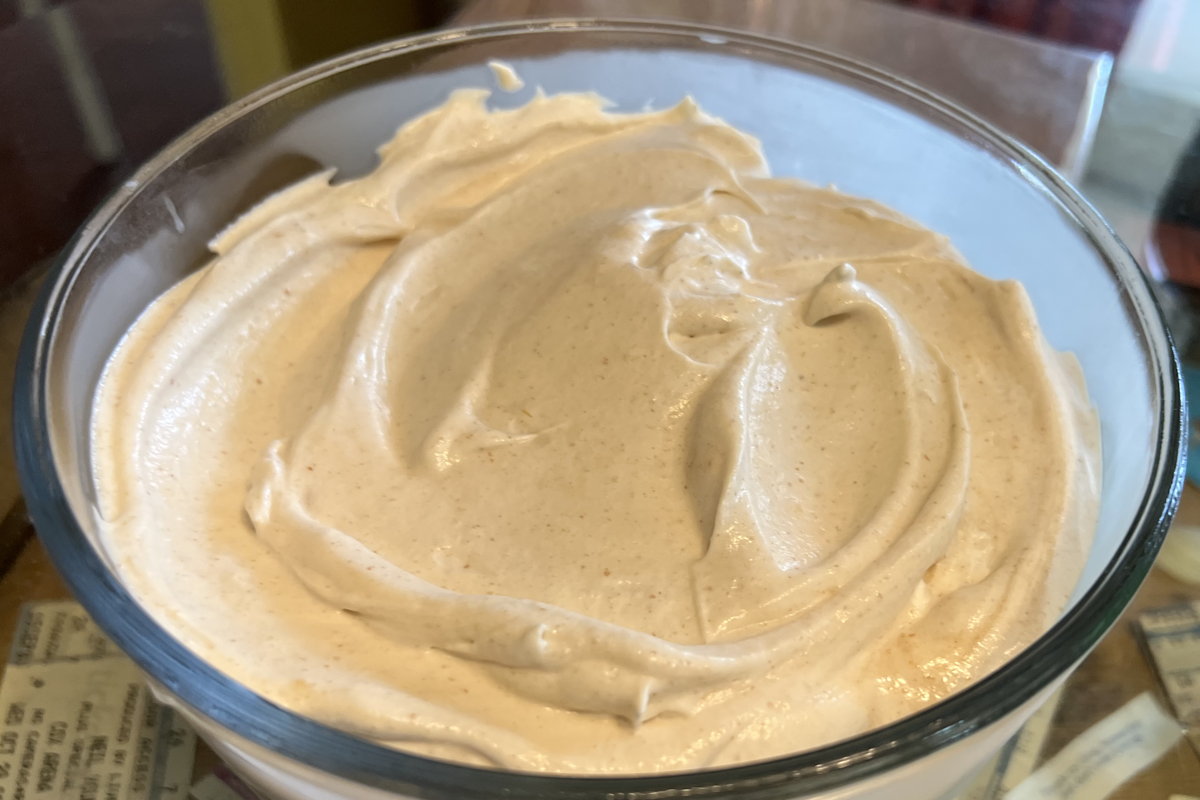
Maple Wheat Ice Cream
Servings: 6
Preparation Time: 1 hour, 30 minutes
Miss Verna L. Miller
Frigidaire Recipes (PDF File, 15.5 MB)
Ingredients
- 1-½ tbsp whole wheat flour
- ⅔ cup water
- 1 cup maple syrup
- 2 egg yolks
- 2 egg whites
- pinch of salt
- 1 tsp lemon juice
- 2 cups whipping cream
- 1 tsp vanilla
Steps
- Make a thin paste of flour and a small amount of the water.
- Combine the remaining water in a pan with the syrup.
- Bring to a boil, and carefully pour the hot syrup into the paste, whisking constantly.
- Return to the pan and to boil, and cook at a medium boil for ten minutes. (It should not rise above the boiling point.)
- Beat the egg yolks in a mixing bowl and pour the hot syrup over the egg yolks, whisking constantly.
- Pour into the top of a double boiler and cook for five minutes, stirring constantly. It should reach the consistency of thin custard.
- Remove from heat and cool to about 120°.
- Beat the egg whites to stiff peaks, adding the salt and lemon juice after peaks form.
- Fold the egg whites into the syrup.
- Whip the cream, adding the vanilla as peaks form.
- Fold the whipped cream into the syrup.
- Pour into a cold, shallow, metal or glass container and freeze overnight.
There is a step, however, that I expect to leave out in the future: if you look in the book, you’ll see that there’s a second beating process, at which cream is added. While I did do so, it did not appear to be necessary. It may be that the directions are (to me at least) vague, and that “cooking” the syrup for ten minutes wasn’t supposed to take most of the water out of the maple syrup. If there had been more water, the cream and the maple might have separated, requiring a repeating after a few hours.
If you read the recipe in the book, you’ll also notice that there’s an ingredient that isn’t called for in the text. There’s a teaspoon of lemon juice in the list of ingredients. I suspect that it has the same purpose as adding vinegar to meringues, but that, since the ice cream isn't being cooked after the meringue is added, the author uses lemon juice to avoid a vinegar flavor.
Even more interesting than flour cooked into the ice cream’s syrup is the Marshmallow Delight. It takes no cooking at all. The syrup is merely marshmallows and pineapple combined. They’re put in the refrigerator overnight. In the morning, the cream is sweetened, whipped, and folded in. If I’m reading the instructions right, this “ice cream” shouldn’t even be frozen, merely chilled. It’s a recipe that can only be reliable with reliable refrigeration.
In response to Revolution: Home Refrigeration: Nasty, brutish, and short. Unreliable power is unreliable civilization. When advocates of unreliable energy say that Americans must learn to do without, they rarely say what we’re supposed to do without.
- Easter Candy-Cane Ice Cream
- Candy canes are a shepherd’s staff. At Christmas, the shepherds were witnesses to Christ’s birth. By Easter, Christ is the good shepherd, giving his life for his lost lambs.
- Frigidaire Recipes (PDF File, 15.5 MB)
- A 1926 manual and cookbook for the Frigidaire home refrigerator/freezer.
- Review: Cold Cooking: Jerry Stratton at Jerry@Goodreads
- This 1942 Montgomery Ward cookbook not only tries to convince you to buy a refrigerator, but to use it year-round. Ice creams are one of the best way to do that.
- Review: Frigidaire Recipes: Jerry Stratton at Jerry@Goodreads
- An elegant book for a revolution in home economics: the refrigerator. Frigidaire treated their refrigerator like Apple treats the Macintosh.
- Review: Revolution in the Valley: Jerry Stratton at Jerry@Goodreads
- An inexpensive, turnkey system from Apple? Perhaps not. Unlike its predecessors that were designed by one or two individuals with a vision, or by a corporate team with a spreadsheet, the Macintosh ended up with a team of brilliant, hero-worshiping kids who knew exactly what couldn’t be done… and how to do it.
- Revolution: Home Refrigeration
- Nasty, brutish, and short. Unreliable power is unreliable civilization. When advocates of unreliable energy say that Americans must learn to do without, they rarely say what we’re supposed to do without.
- What is a refrigerator tray in older recipes?: Jerry Stratton at StackExchange
- “For freezing ice cream or other confections in a refrigerator’s freezer area, a refrigerator tray was a rectangular, shallow, open container. The ice cube tray (often provided with the refrigerator) began, around the mid-to-late thirties, to be fitted with a removable divider so that it doubled as the refrigerator tray.”
More cookbooks
- Tempt Them with Tastier Foods: Second Printing
- The second printing of Tempt Them with Tastier Foods contains several newly-discovered Eddie Doucette recipes, as well as an interview with the chef’s son, Eddie Doucette III.
- My Year in Food: 2023
- From Italy to the Ukraine—some of it real, and some through cookbooks—this has been a great year for food.
- Finding vintage cookbook downloads
- There are several sites for finding vintage cookbooks, from general-purpose online archives to special collections at universities. Here are a few of my favorites.
- A Bicentennial Meal for the Sestercentennial
- Four community cookbooks celebrating the bicentennial. As we approach our sestercentennial in 2026, what makes a meal from 1976?
- A golden harvest of sunflower seeds
- Golden Harvest Sunflower Seed Recipes is a fascinating bit of ephemera from the seventies and the tail end of the era of regional whole grain mills.
- 62 more pages with the topic cookbooks, and other related pages
More food history
- Aunt Jenny’s Old-Fashioned Christmas Cookies
- Spry shortening’s 1952 Christmas cookie book was one of many by which they attempted to compete with Crisco.
- Tempt Them with Tastier Foods: Second Printing
- The second printing of Tempt Them with Tastier Foods contains several newly-discovered Eddie Doucette recipes, as well as an interview with the chef’s son, Eddie Doucette III.
- A Centennial Meal for the Sestercentennial
- How did Americans in 1876 celebrate the centennial culinarily? Some of their recipes are surprisingly modern, and some are unique flavors worthy of resurrecting.
- Looking back over 1950 in vintage cooking
- While I didn’t make my goal of trying a recipe every month in the month it was meant for, following this calendar through 2023 was an interesting experience and provided some very good food.
- Plain & Fancy in the seventies with Hiram Walker
- Enjoy a whole new world of fun, excitement and discovery in Hiram Walker Cordials, adding a personal touch to all your memorable moments and special occasions—plain or fancy!
- 12 more pages with the topic food history, and other related pages
More refrigerators
- Ice cream from your home freezer
- You can make great ice cream with whole eggs, egg yolks, and egg whites. You can even make it without eggs at all. All you need is syrup and cream—and a refrigerator with a freezer or a standalone home freezer.
- Revolution: Home Refrigeration
- Nasty, brutish, and short. Unreliable power is unreliable civilization. When advocates of unreliable energy say that Americans must learn to do without, they rarely say what we’re supposed to do without.

